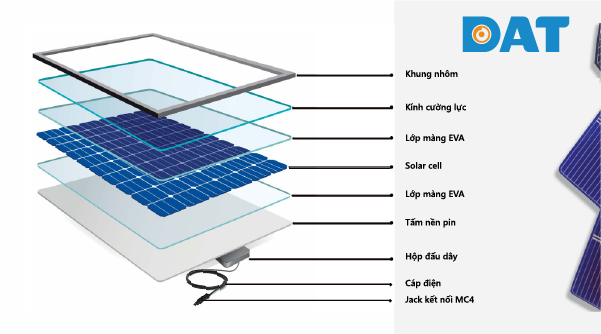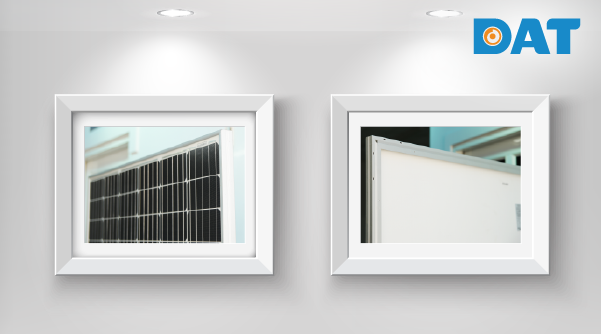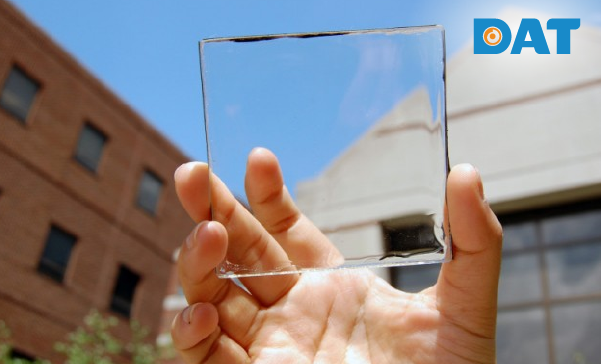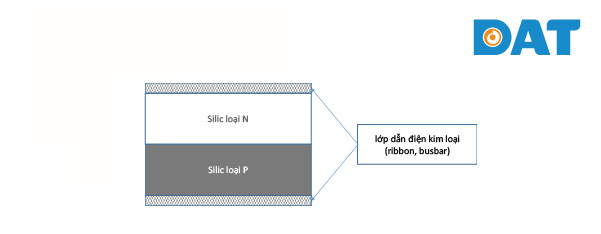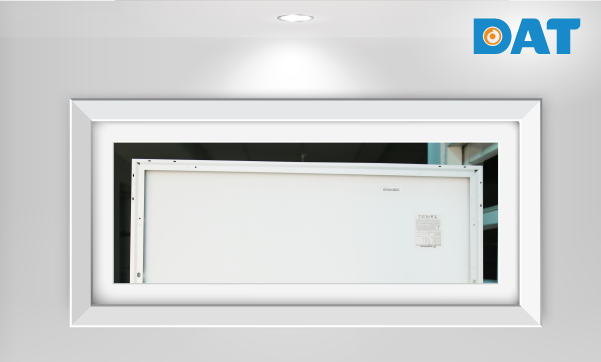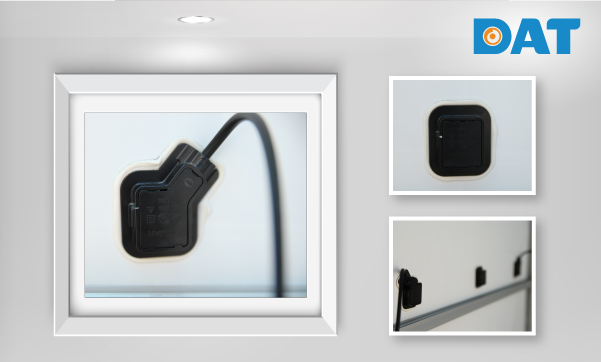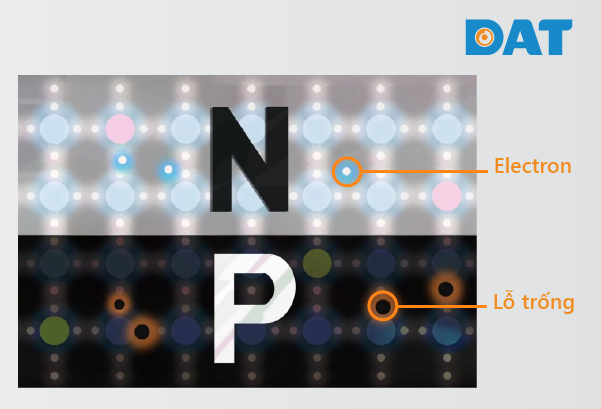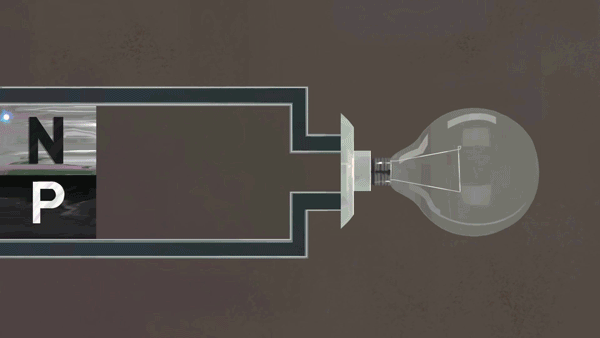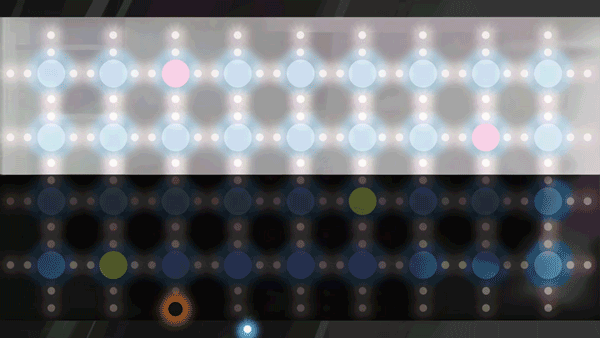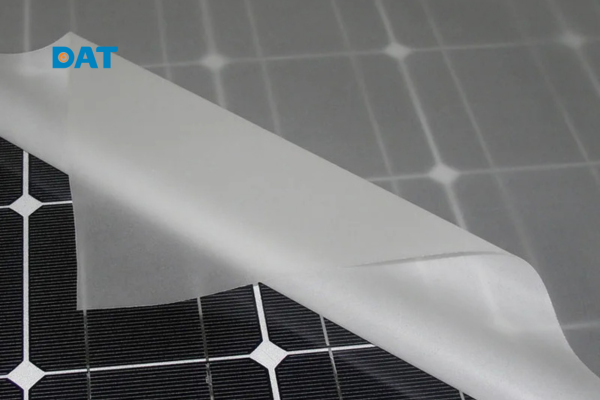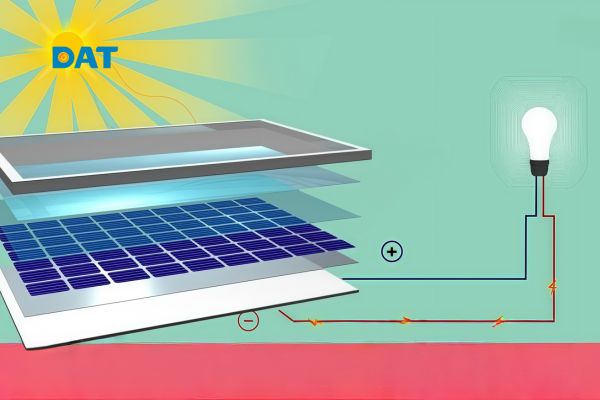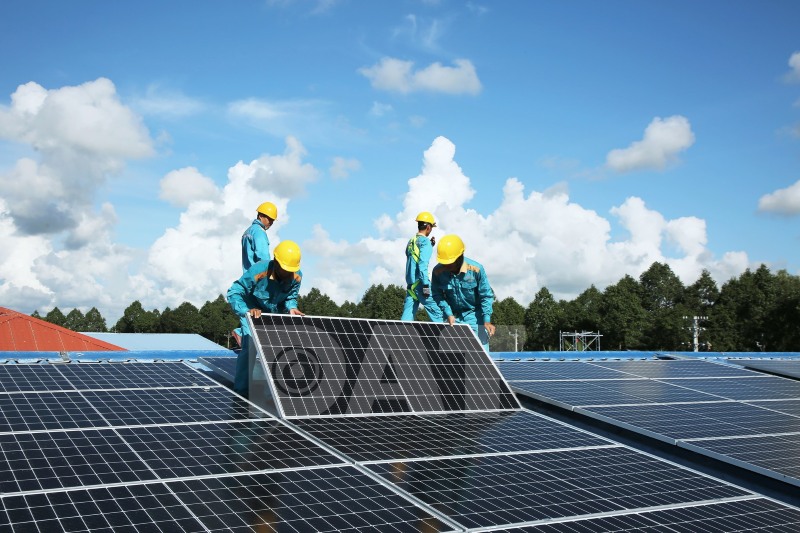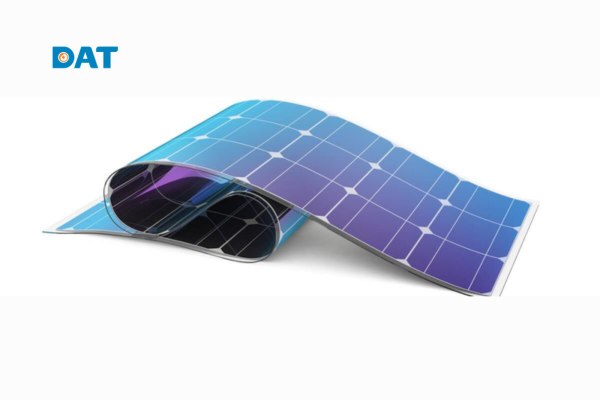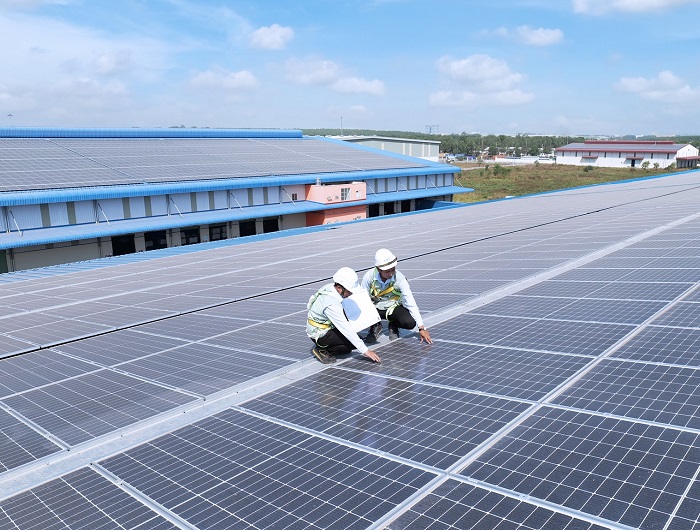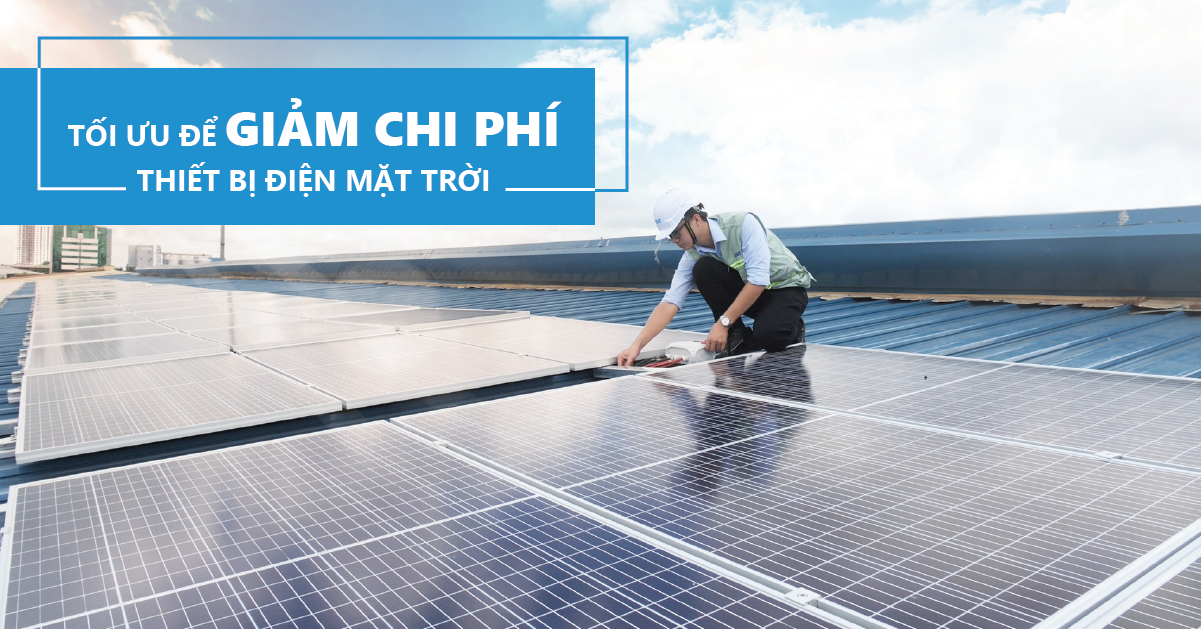Pin mặt trời là gì? Giá tấm pin năng lượng mặt trời 12/2025
Bài viết này của DAT Group cung cấp cái nhìn toàn diện về cấu tạo chi tiết và nguyên lý hoạt động của pin năng lượng mặt trời, đặc biệt phân tích sâu vai trò của cell pin trong việc chuyển hóa ánh sáng thành điện năng sạch, hiệu quả. DAT Group tiên phong chia sẻ kiến thức cập nhật, hướng dẫn bạn nhận biết các loại pin phổ biến như mono, poly, cũng như công nghệ cell hiện đại đang được ứng dụng rộng rãi trên thị trường Việt Nam.
Nếu bạn muốn tìm hiểu thêm về các loại pin năng lượng mặt trời như thin-film hay các công nghệ mới, hãy xem thêm tại đây: Các loại pin năng lượng mặt trời: Nên chọn loại nào?. Ngoài ra, các sản phẩm pin mặt trời chất lượng từ DAT Group luôn được cập nhật tại Tấm pin năng lượng mặt trời.
Pin mặt trời (còn gọi là tấm PV – photovoltaic) là thiết bị chuyển đổi ánh sáng mặt trời thành điện năng. Bạn có thể hiểu đơn giản: khi ánh nắng chiếu vào tấm pin, nó sẽ tạo ra dòng điện để cung cấp cho các thiết bị điện trong nhà hoặc doanh nghiệp.
Lịch sử ra đời của pin mặt trời
Khởi Nguồn: Thế Kỷ 19 – Phát Hiện Hiệu Ứng Quang Điện
Câu chuyện bắt đầu với Edmond Becquerel, nhà vật lý người Pháp. Năm 1839, ông phát hiện ra “hiệu ứng quang điện” – hiện tượng ánh sáng có thể tạo ra dòng điện. Đây là nền tảng khoa học cho toàn bộ công nghệ pin mặt trời sau này.
Trước đó, năng lượng mặt trời chỉ được dùng để sản xuất hơi nước, vận hành máy móc. Phát hiện của Becquerel mở ra khả năng chuyển đổi trực tiếp ánh sáng thành điện năng.
Bước Tiến Đầu Tiên: 1893 – Tế Bào Quang Điện Đầu Tiên
Năm 1893, Charles Fritts tạo ra tế bào quang điện thực sự đầu tiên. Ông phủ một lớp vàng mỏng lên các tấm selen. Đây là thiết bị tiền thân của tấm pin mặt trời ngày nay.
Tuy nhiên, hiệu suất chuyển đổi lúc này còn rất thấp. Nhưng đây là bước đột phá quan trọng, chứng minh công nghệ này có thể thực hiện được.
Kỷ Nguyên Silicon: 1941 – Pin Mặt Trời Hiện Đại
Bước ngoặt lớn xảy ra năm 1941. Russell Ohl, nhà phát minh người Mỹ làm việc tại Bell Laboratories, nhận bằng sáng chế cho pin mặt trời silicon đầu tiên trên thế giới.
Silicon thay thế selen, mang lại hiệu suất cao hơn nhiều. Đây chính là vật liệu chủ đạo cho pin mặt trời đến tận ngày nay.
Ứng Dụng Thương Mại: 1954 – Tấm Pin Đầu Tiên
Năm 1954, cũng chính Bell Laboratories sản xuất tấm pin mặt trời đầu tiên. Lần đầu tiên, công nghệ này được đưa vào sản xuất hàng loạt.
Ứng dụng đầu tiên? Vệ tinh không gian. Pin mặt trời là giải pháp lý tưởng để cung cấp năng lượng cho các thiết bị bay ngoài không gian, nơi không có nguồn điện nào khác.
Phổ Biến Rộng Rãi: Thập Niên 1970
Khoảng những năm 1970, pin mặt trời xuất hiện trong đời sống hàng ngày. Bạn có nhớ những chiếc máy tính cầm tay với tấm pin nhỏ trên đỉnh không? Đó chính là tế bào quang điện.
Đây là lần đầu tiên công nghệ này tiếp cận được người dùng phổ thông, không chỉ giới hạn trong nghiên cứu hoặc không gian.
Ngày Nay: Ứng Dụng Đa Dạng
Hơn 100 năm phát triển, pin mặt trời đã đi một chặng đường dài:
- Máy tính cầm tay: Vẫn sử dụng tế bào quang điện nhỏ
- Nhà ở và tòa nhà thương mại: Cung cấp điện cho toàn bộ công trình
- Dự án lớn: Mebi Farm, Bình Thuận
- Vùng hẻo lánh: Giải pháp off-grid cho các khu vực không có lưới điện
Tóm Lại Timeline
- 1839: Edmond Becquerel phát hiện hiệu ứng quang điện
- 1893: Charles Fritts tạo tế bào quang điện đầu tiên (vàng + selen)
- 1941: Russell Ohl phát minh pin silicon đầu tiên
- 1954: Bell Laboratories sản xuất tấm pin mặt trời đầu tiên
- 1970s: Xuất hiện trong sản phẩm tiêu dùng
- Hiện tại: Ứng dụng rộng rãi từ gia đình đến thương mại
Từ một phát hiện khoa học đơn giản, pin mặt trời đã phát triển thành nguồn năng lượng sạch, đáng tin cậy, phục vụ hàng triệu người trên toàn thế giới. Và với giá thành ngày càng giảm, công nghệ này đang trở nên phổ biến hơn bao giờ hết.
Cấu tạo tấm pin năng lượng mặt trời
Pin năng lượng mặt trời được chia làm 8 bộ phận gồm: khung nhôm, kính cường lực, lớp màng EVA, solar cell, tấm nền pin (phía sau), hộp đấu dây (junction box), cáp điện, Jack kết nối MC4.
- Khung nhôm: có chức năng tạo ra một kết cấu đủ cứng cáp để tích hợp solar cell và các bộ phận khác lên. Với thiết kế cứng cáp nhưng vẫn đảm bảo trọng lượng đủ nhẹ, khung nhôm solar có thể bảo vệ và cố định các thành phần bên trong trước tải trọng gió lớn và ngoại lực tác động bên ngoài. Một số hãng ví dụ như Canadian Solar, thậm chí khung nhôm còn được anode hóa và gia cố thanh ngang để tăng độ cứng cáp cho tấm pin. Màu sắc phổ biến của khung nhôm là bạc.
- Kính cường lực: giúp bảo vệ solar cell khỏi các tác động của thời tiết như nhiệt độ, mưa, tuyết, bụi, mưa đá (đường kính 2,5cm trở xuống) và các tác động va đập khác từ bên ngoài. Kính năng lượng mặt trời cường lực được thiết kế có độ dày từ 2-4mm (đa số là khoảng 3.2-3.3mm) để đảm bảo vừa đủ khả năng bảo vệ và duy trì được độ trong suốt cho tấm pin mặt trời (ánh sáng ít bị phản xạ, khả năng hấp thụ tốt).
- Lớp màng EVA (ethylene vinyl acetate) còn được được gọi là chất kết dính, là 2 lớp màng polymer trong suốt được đặt trên và dưới lớp solar cell có tác dụng kết dính solar cell với lớp kính cường lực phía trên và tấm nền phía dưới. Lớp này còn có tác dụng hấp thụ và bảo vệ solar cell khỏi sự rung động, tránh bám bụi và hơi ẩm. Vật liệu EVA có khả năng chịu đựng nhiệt độ khắc nghiệt và có độ bền cực kỳ cao.
- Lớp Solar cell (tế bào quang điện). Pin mặt trời được cấu tạo từ nhiều đơn vị nhỏ hơn là solar cell. Những loại pin năng lượng mặt trời thông dụng như mono và poly được làm từ silic, một loại chất bán dẫn phổ biến. Trong một cell pin năng lượng mặt trời, tinh thể silic bị kẹp giữa hai lớp dẫn điện (ribbon và các thanh busbar). Một tế bào quang điện sử dụng hai lớp silic khác nhau, loại N và loại P.
- Tấm nền pin (phía sau), có chức năng cách điện, bảo vệ cơ học và chống ẩm. Vật liệu được sử dụng có thể là polymer, nhựa PP, PVF, PET. Tấm nền có độ dày khác nhau tùy vào hãng sản xuất. Phần lớn tấm nền sẽ có màu trắng.
Với sự phát triển của công nghệ, hiện tại một số hãng như Canadian Solar đã có một số dòng pin đặc biệt như BiKu, loại pin không có tấm nền phía sau, thay vào đó là mặt kính cường lực trong suốt giúp pin năng lượng mặt trời có thể hấp thụ ánh sáng ở cả hai mặt trước và sau. Bạn có thể tham khảo ở video bên dưới.
- Hộp đấu dây (junction box) nằm ở phía sau cùng, là nơi tập hợp và chuyển năng lượng điện được sinh ra từ tấm pin năng lượng mặt trời ra ngoài. Vì đây là điểm trung tâm nên được thiết kế bảo vệ khá chắc chắn.
- Cáp điện DC, loại cáp điện chuyên dụng cho điện năng lượng mặt trời, có khả năng cách điện một chiều DC cực tốt, kèm với đó là khả năng chống chịu tốt trước sự khắc nghiệt của thời tiết (tia cực tím, bụi, nước, ẩm..) và tác động cơ học khác.
- Jack kết nối MC4, là đầu nối điện thường được dùng để kết nối các tấm pin mặt trời. “MC” trong MC4 là viết tắt của nhà sản xuất Multi-Contact. Loại jack kết nối này giúp bạn dễ dàng kết nối các tấm pin và dãy pin bằng cách gắn jack từ các tấm pin liền kề với nhau bằng tay.
Nguyên lý làm việc (hoạt động) của pin năng lượng mặt trời
Để giải thích nguyên lý làm việc của pin năng lượng mặt trời thì phải lại giải thích nguyên lý của một đơn vị nhỏ hơn là solar cell (Pin mặt trời được cấu tạo từ nhiều solar cell). Như đã đề cập ở phần cấu tạo tấm pin năng lượng mặt trời, một tế bào quang điện sử dụng hai lớp silic khác nhau, loại N có các electron dư thừa và loại P có các khoảng trống cho các electron dư thừa, gọi là lỗ trống.
Tại nơi tiếp xúc giữa 2 loại silic (P/N Junction), electron có thể di chuyển qua tiếp diện P/N để lại điện tích dương ở một mặt và tạo ra điện tích âm ở mặt còn lại.
Bạn có thể hình dung, ánh sáng là một dòng các hạt nhỏ li ti gọi là các hạt photon (bắn ra từ mặt trời).
Khi một trong các hạt này va đập vào cell pin năng lượng mặt trời với đủ năng lượng, nó có thể đánh bật một electron khỏi liên kết để lại một lỗ trống.
Electron mang điện tích âm và lỗ trống mang điện tích dương nay có thể di chuyển tự do, nhưng bởi vì trường điện từ tại tiếp diện P/N nên chúng chỉ có thể đi theo một hướng. Electron bị hút về mặt N và lỗ trống bị hút về mặt P.
Các electron di động được thu thập ở các lá kim loại tại đỉnh solar cell (ribbon và các thanh busbar). Từ đây chúng đi vào mạch tiêu thụ thực hiện chức năng điện trước khi quay trở về lá nhôm ở mặt sau.
Electron là thứ duy nhất di chuyển trong solar cell và quay về nơi xuất phát. Chẳng có thứ gì hao mòn hay cạn kiệt nên cell pin năng lượng mặt trời có tuổi thọ lên tới hàng chục năm.
Điện được tạo ra từ tấm pin năng lượng mặt trời là điện một chiều (DC). Để có thể sử dụng cho các tải, thiết bị bình thường thì cần phải chuyển điện DC thành AC (điện xoay chiều). Và đó là chức năng của inverter.
Lợi ích của tấm pin năng lượng mặt trời
Tấm pin mặt trời mang đến giải pháp độc lập năng lượng cho các khu vực hẻo lánh. Những ngôi nhà và cabin xa lưới điện quốc gia không cần trả chi phí khổng lồ để lắp đặt cột điện và kéo dây cáp từ điểm kết nối gần nhất. Hệ thống điện mặt trời tiết kiệm hơn và cung cấp điện ổn định trong hơn 30 năm nếu bạn bảo trì đúng cách. Đối với hệ thống kết nối lưới, bạn bắt đầu hưởng lợi ngay khi hệ thống hoạt động – hóa đơn tiền điện hàng tháng giảm đáng kể hoặc thậm chí về 0. Phần tuyệt vời nhất: nếu hệ thống sản xuất nhiều điện hơn mức bạn tiêu thụ, bạn bán lượng điện dư thừa cho công ty điện lực và tạo thêm thu nhập.
Năng lượng mặt trời là nguồn năng lượng sạch và tái tạo – yếu tố quan trọng trong bối cảnh biến đổi khí hậu toàn cầu ngày càng gay gắt. Tấm pin mặt trời không có bộ phận chuyển động, giảm thiểu nhu cầu bảo dưỡng xuống mức tối thiểu. Các nhà sản xuất như Astronergy Solar hay Canadian Solar chế tạo tấm pin chắc chắn, sử dụng được hàng chục năm. Điều này giúp giảm áp lực lên bầu khí quyển từ khí thải nhà kính mà các nguồn năng lượng hóa thạch truyền thống tạo ra.
Về mặt tài chính, sau khi hoàn vốn chi phí lắp đặt ban đầu, điện năng hệ thống sản xuất trong 15-20 năm tiếp theo hoàn toàn miễn phí. Giá tấm pin đã giảm mạnh trong những năm gần đây – chi phí lắp đặt một hệ thống năng lượng mặt trời tương đương giá một chiếc ô tô cỡ trung bình. Hệ thống hoạt động độc lập, ổn định và mang lại giá trị lâu dài cho ngôi nhà hoặc doanh nghiệp của bạn.
Bảng giá tấm pin năng lượng mặt trời năm 2025
| Model | Công suất (W) | Giá (VNĐ) |
|---|---|---|
| Tấm pin Mono 485W HiKu5 Canadian Solar | 485 | Khoảng 1.719.000₫ – 3.800.000₫ |
| Tấm pin năng lượng mặt trời Canadian 450W | 450 | Khoảng 1.575.000₫ – 3.105.000₫ |
| Tấm pin năng lượng mặt trời Mono 445W HiKu | 445 | Khoảng 2.700.000₫ |
| Tấm pin năng lượng mặt trời Canadian 440W | 440 | Khoảng 1.850.000₫ |
| Tấm pin năng lượng mặt trời Canadian 415W | 415 | Liên hệ |
| Tấm pin năng lượng mặt trời Canadian 410W | 410 | Khoảng 1.750.000₫ (tùy loại) |
| Tấm pin năng lượng mặt trời Astronergy 550W 2 Mặt Kính | 550 | Khoảng 2.020.000₫ – 3.850.000₫ |
| Tấm pin năng lượng mặt trời Astronergy 545W 2 Mặt Kính | 545 | Liên hệ |
| Tấm pin năng lượng mặt trời Astronergy 540W 2 Mặt Kính | 540 | Liên hệ |
| Tấm pin năng lượng mặt trời Canadian 550W | 550 | Khoảng 3.850.000₫ |
| Tấm pin năng lượng mặt trời Canadian 545W | 545 | Liên hệ |
| Tấm pin năng lượng mặt trời Canadian 535W | 535 | Liên hệ |
Pin năng lượng mặt trời với cấu tạo đơn giản nhưng hiệu quả, dựa trên nguyên lý chuyển đổi ánh sáng mặt trời thành điện năng, là giải pháp bền vững cho nhu cầu điện năng hiện nay. Việc ứng dụng pin năng lượng mặt trời không chỉ giúp tiết kiệm chi phí điện mà còn góp phần bảo vệ môi trường. Hãy lựa chọn tấm pin năng lượng mặt trời và đèn năng lượng mặt trời chất lượng tại DAT Group để tận hưởng nguồn năng lượng sạch, an toàn và tiết kiệm nhất cho gia đình và doanh nghiệp của bạn.

